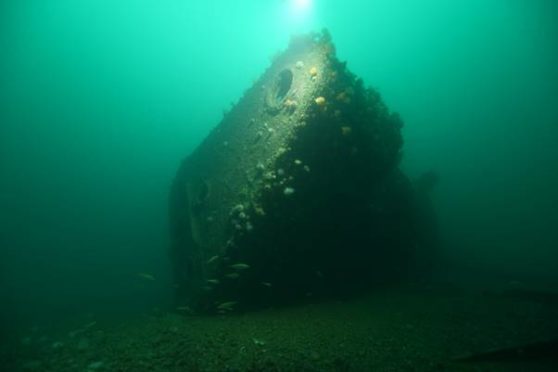Divers have undertaken a new study of the scuttled Scapa Flow warships.
Debris from historic German warships which once lay on the seabed in Orkney is causing a wave of intrigue for archaeologists as they continue to uncover the wonders that remain beneath the surface.
Dozens of vessels from the First World War German High Seas Fleet including a range of battleships, battlecruisers and distinctive vessels remained on the seabed before being salvaged during the interwar period.
A total of 42 vessels were re-floated and salvaged for scrap including the battleship Kaiser and the battlecruiser Moltke in what was described as one of the greatest marine salvage feats of all time.
In a bid to understand the construction and the equipment once incorporated in the framework of these ships, archaeologists from the Orkney Research Centre for Archaeology (ORCA) have teamed up with SULA Diving to examine the salvage sites of Scapa Flow as part of the Historic Environment Scotland-funded marine archaeology project.
The project is led by Pete Higgins, Senior Project Manager (ORCA) and Kevin Heath (SULA Diving) on behalf of Historic Environment Scotland.
Mr Higgins said: “This is an important marine archaeology project surveying what remains of the German High Seas Fleet warships that were salvaged from Scapa Flow in the inter war period. It is very exciting to see divers from all over the world participating in marine archaeology. Their work is helping us retrieve valuable information on warships that we thought had been effectively destroyed seventy years ago.”
Following the successful completion of phase one of the project last year, the second phase was launched in June, aiming to provide data to aid in the long term preservation of the site by examining the remains that linger beneath the ocean’s surface around the island of Cava.
Philip Robertson, Historic Environment Scotland’s marine expert, added: “Nearly 100 years since the High Seas Fleet was interned in Scapa Flow at the end of the First World War, HES funded this project to help us understand and protect, where possible, the important information that has been left behind from these times and which helps us appreciate Scapa Flow’s key role as a naval wartime harbour and the incredible story of the scuttling and salvage of the High Seas Fleet.”
